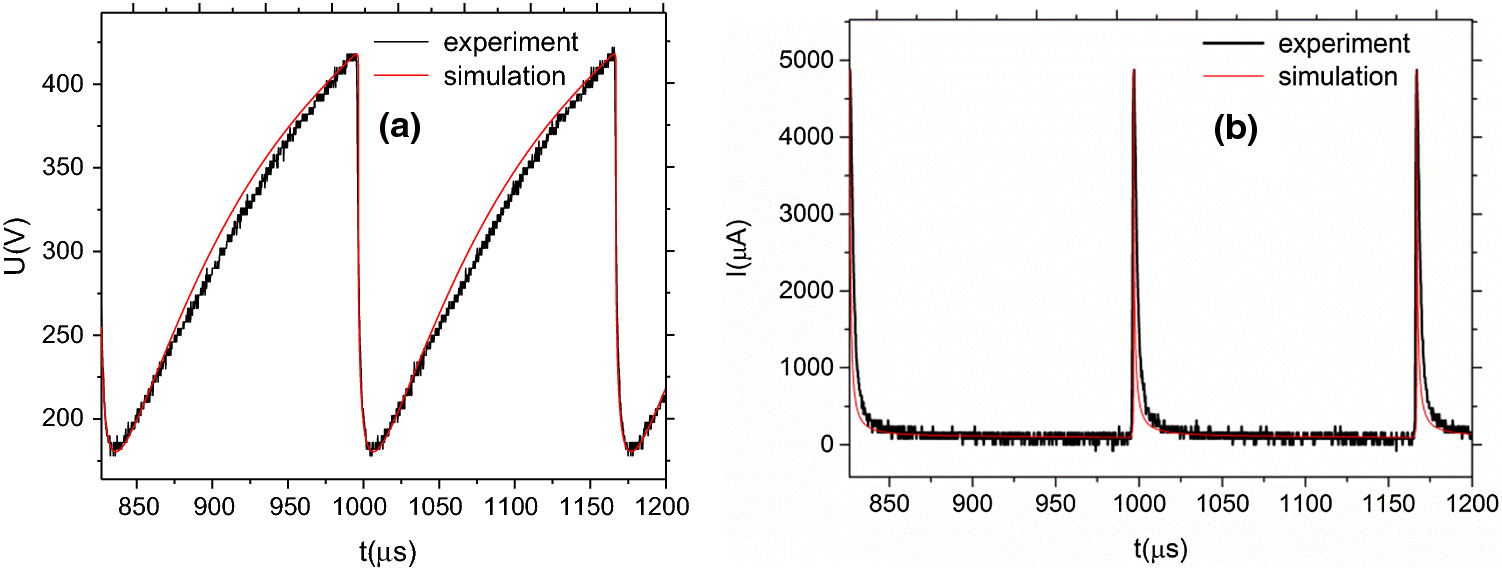https://doi.org/10.1140/epjd/s10053-022-00415-5
Regular Article – Plasma Physics
Influence of equivalent resistance on the simulation of self-pulsing discharge by using a circuit model
1
Hebei Key Laboratory of Optic-Electronic Information and Materials, College of Physics Science and Technology, Hebei University, 071002, Baoding, China
2
Institute of Environmental Engineering, Hebei University, 071002, Baoding, China
Received:
20
December
2021
Accepted:
3
May
2022
Published online:
7
June
2022
Self-pulsing phenomena are obtained in plane–plane discharge, and a circuit model is built to simulate the self-pulse. The discharge cell is modeled as a capacitor in parallel with an equivalent resistor. In this model, two forms of equivalent resistance are used to simulate the self-pulse. In the first method, a higher resistance value and a lower resistance value are used when the capacitor charges and discharges, respectively. In the second method, the value of the equivalent resistor is calculated from experimental data and is a function of the time. Results show that the equivalent resistor has an important influence on the simulated self-pulses. Compared with the simulated results by using the first method, when the equivalent resistance is set to change with time t, the simulated waveforms of discharge current and voltage are more consistent with those obtained in experiments at different average discharge currents. By using the second method, the maximum and minimum voltages obtained using the model agree with the experimental data within 1.1%, whereas the differences between peak current values are less than 0.1%. The simulated waveforms by using the second method also present a gentle falling edge of the discharge current, which is much similar to that in the experiment. The relationship between discharge currents from different devices in the circuit is also discussed. The results show that currents across the measured resistor and the ballast resistor are not equal.
© The Author(s), under exclusive licence to EDP Sciences, SIF and Springer-Verlag GmbH Germany, part of Springer Nature 2022





